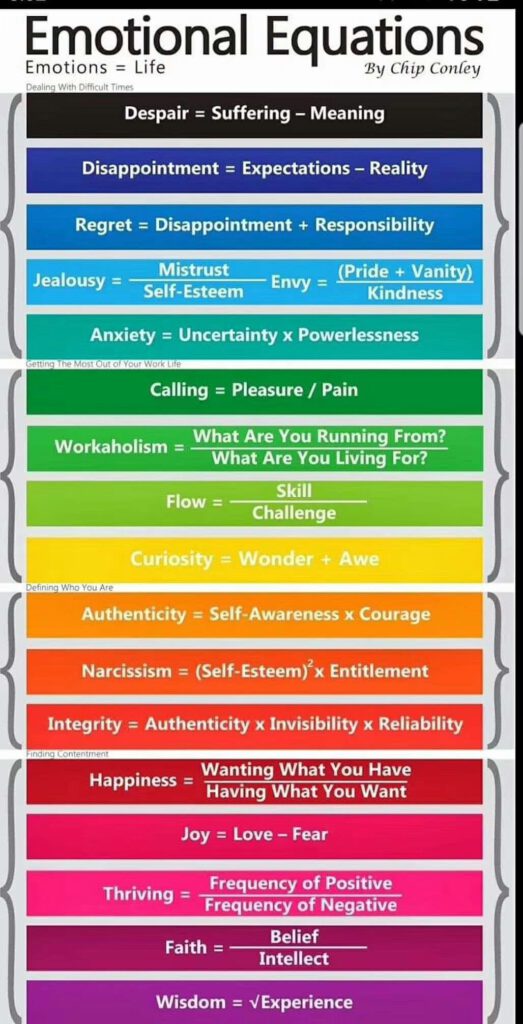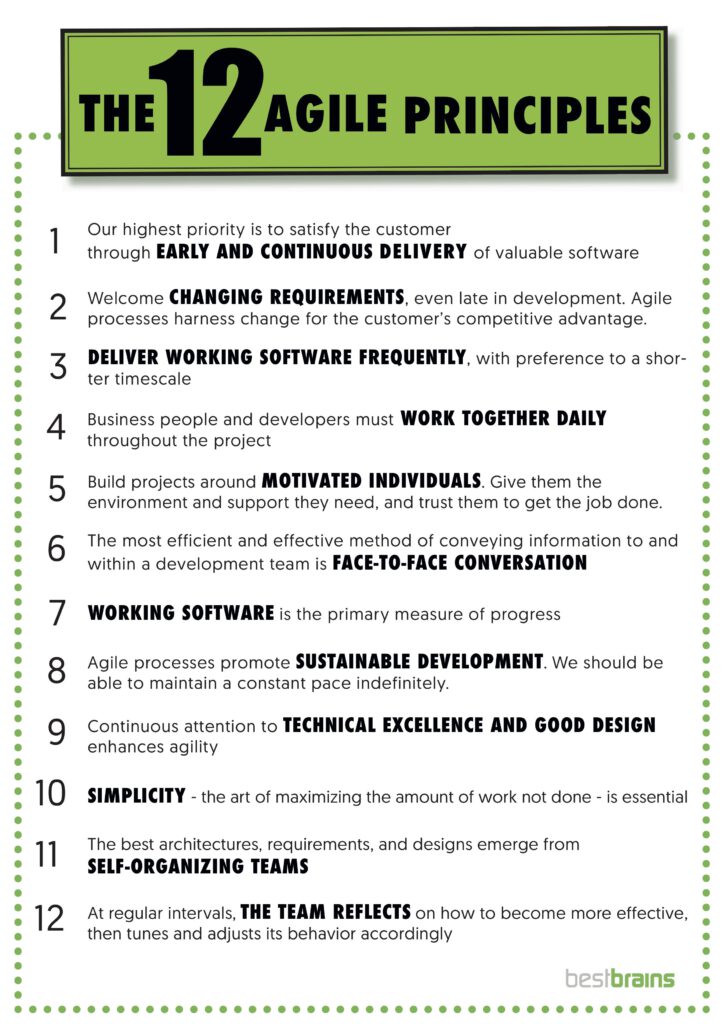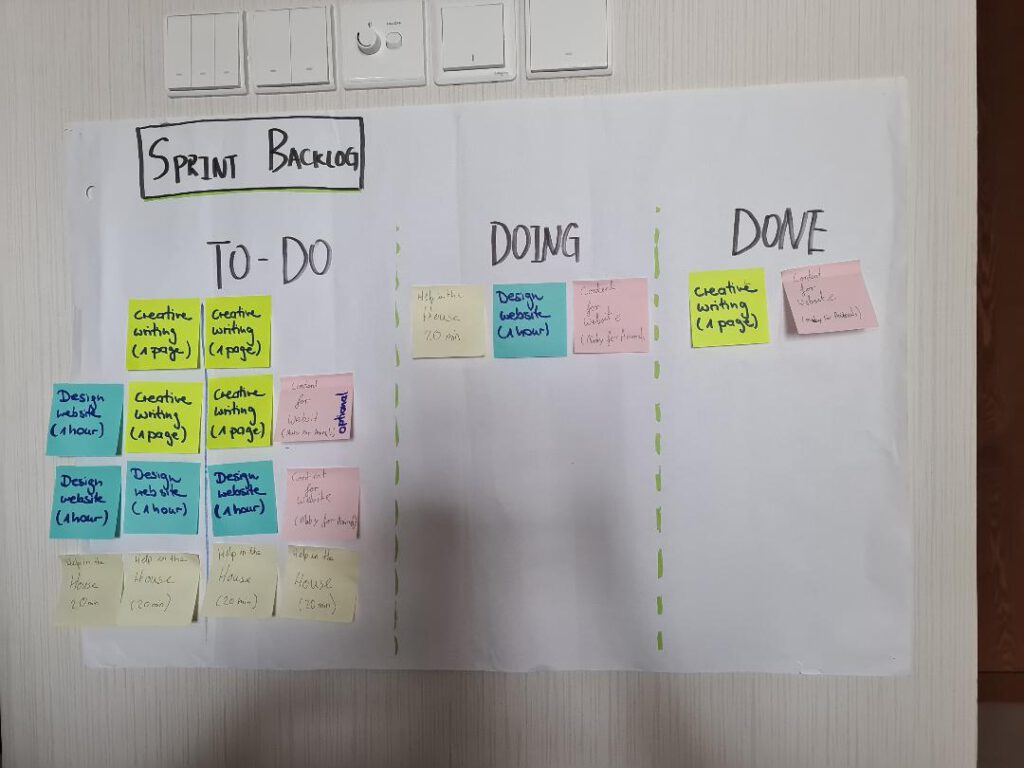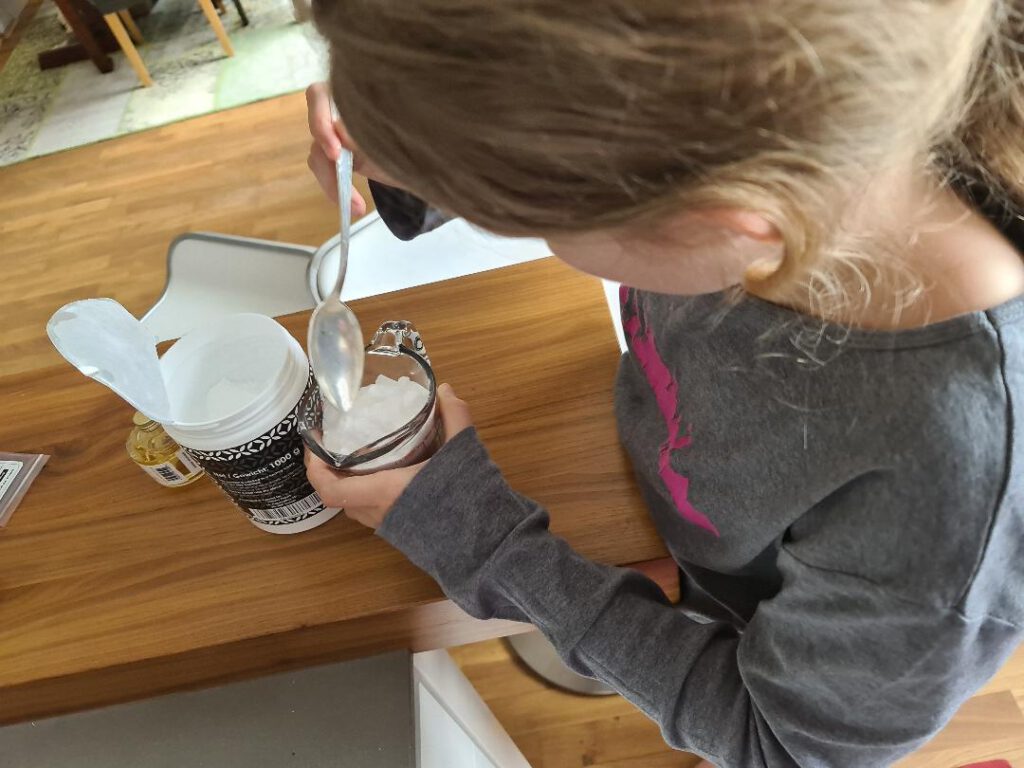Agile parenting is not a religion or something with strict rules and do-s and don’t-s. In fact agile as practiced in the field of IT development or the corporate world itself, has a lof of variety, from rigid daily SCRUM stand-up meetings to creative be-silly design thinking sessions. It is very personal and we always advise our clients to define their purpose of agile and then pick the tools and methods accordingly. Not the other way round.
„Agile Parenting“ is based on the principles of agile project management. It plays with its tools, methods and the radically customer-centric and purpose-driven mindset. When we started it, Agile helped us to get a grip on this challenge: How do we help our kids to enter the world?
The original Manifesto for Agile Software Development was drafted by American IT experts in 2002, as a consequence of industry frustration.
They had experienced too often, that the created software did not meet the requirements that had been defined at the beginning of the project due to

The alternative they were looking for was pure value creation, which meant to them: Sustainable results in short lead time, high morale, safety, quality, customer delight.
Parents also feel frustrated.
1. Families feel stressed due to high workload, social obligations and financial pressure. Maybe more importantly, they feel trapped in routines and social norms which they follow – while being aware that often they do not benefit them.(http://www.sixthtone.com/news/1006391/how-one-obscure-word-captures-urban-chinas-unhappiness

The Agile Manifesto claims that the items on the right are important but the items on the left are crucial.
Individuals and interactions over processes and tools
Working software over comprehensive documentation
Customer collaboration over contract negotiation
Responding to change over following a plan
“Responding to change over following a plan” is most likely natural for all families. Who has not experienced packing bags for a highly anticipated weekend getaway and the night before the kindergarten kids starts vomiting? However, the idea behind this item is even bigger. It encourages us to venture forward with as few items as possible on our bucket list and just look where the journey takes us. It encourages us to work with what we have. My child is a gifted artist but I envisioned a career as a lawyer for her. What is better? Item from the left or from the right?
This requires a lot of solution-driven, regular, structured communication. Agile project management has developed a bag of tools to institutionalize this, e.g. KANBAN boards, product backlog, review and retrospective. All of them can be used effectively by agile families.

The manifesto is further explained by the 12 agile principles. Not all are fully relevant in the family context. https://agilemanifesto.org/principles.html. These are the ideas we find important:
Self-organization is covered by various principles. In the corporate world as in the family realm, it requires a lot of personal growth by parents and coaching for kids until it really works. When your primary school kid insists on packing her school bag herself and then forgets her snack box, she will be hungry that day or ask her friends to share their snack with them. When your middle-school kid resists studying for a test, parents do not force him, and he gets a bad mark in the end, this will teach him a lesson. Either he embraces the assistance parents are willing to give him or he studies better by himself the next time.
Empowering your children is very important according to Dr. William Stixrud and Ned Johnson They gives tons of scientific evidence why in their book The Self-Driven Child. Kids need to be allowed to fail on their own terms. This is the prerequisite for the deep knowledge that they have control over themselves. This experience actually builds up the frontal cortex in the brain.



Translated into the domain of family life “Individuals and interactions over processes and tools” means that what we do needs to serve us as human beings. Some social norms like dressing nicely or keeping proper hygiene can give useful guidance on how to prosper socially and physically. Other unwritten rules, like which clothing brands you have to wear or when it is time for a child to stop playing with their cuddly toys can add pressure or even damage an individual.
Bruce Feller Adapt gives a good example in his TED talk: https://www.ted.com/talks/bruce_feiler_agile_programming_for_your_family?language=ry
Family dinner is a good idea but might be overrated and actually not fit the family situation. Instead of forcing this ritual, it can be better to re-frame it and define the target to spend 10 minutes of meaningful time together every day. This can be any time, not limited to dinner. According to Feller, happy families have an above average ability to adapt.
Furthermore, this item reminds us that it is not possible to draw lines with a ruler when it comes to human beings who are continuously changing. Organizing daily tasks with a KANBAN board might work well for a while and suddenly does not do the trick any more. Instead of forcing the daily standup on everyone it is better to find out how to adjust – or replace – this procedure.
As parents, we often look for proofs that we are doing the right thing. “Working software over comprehensive documentation” can serve as a reminder to focus on the actual outcome. For instance, this can mean that it is more important that my child enjoys playing the piano than winning piano competitions. Another example is not to measure learning success of a child by the hours she studied or the number of pages he read in a book but simply by assessing how much they truly learned and understood.
The idea “Customer collaboration over contract negotiation” can be the most radical when applied to family life. The way we live it, it means that we communicate a lot, align expectations and needs of all family members and each member takes responsibility for everyone else. This is the contrary of order-and-control, which is often found in corporate and in family life where one person or group sets the rules and everyone else has to follow, receives and completes tasks. Don’t get us wrong: A top-down leadership style is not necessarily a bad thing and it can be vital in times of crises.
Agile emphasizes teamwork. One of its values is to give power for decisions to those who know best. Most of the time these are not the superiors or line managers but the individuals who execute the task on a daily basis. This challenges the “old normal” of hierarchies. In the context of agile parenting, this means that parents need to learn to trust that children can and should make important decisions for themselves. Children make decisions, the whole family gives constant feedback. For small kids this may mean that they may pick the clothes they want to wear even if this does not exactly reflect the color-coding you had in your mind for the dinner in that fancy restaurant. If children do not practice taking small decisions how can we expect them to take educated big decisions when they are teenagers or grown-ups?
Most importantly, fluid collaboration requires that team members work together daily. It is a reminder to have quality conversations every day beyond “how was your day?” Instead, they can cook and clean together, craft, draw or plan the next holiday together (link zu agile holiday). At home and at work the most efficient and effective method of conveying information to and within a development team is face-to-face conversation.

Simplicity. The art of maximizing the amount of work not done – is essential: eliminate waste, build quality in. For families this can mean the adoption of minimalism: Why drive your child to school when she can take a bus? Why travelling overseas as appropriate for people of our status when everyone in our family would have more fun by just renting a cottage in the mountains? Why searching for your keys every morning instead of having the routine of putting keys at the same spot every time you enter your home? Why buying an extra wardrobe for all those clothes instead of sticking to a capsule wardrobe where you can mix and match everything and need much less?
The 12 Agile Principles do not explicitly cover our love for Experiment J. This is hidden within principle 1 and 3. Agile projects in the corporate world aim at producing an MVP, a minimum viable product as soon as possible. They start with a workable solution and only later add features as they learn about their customers’ additional needs and desires. The basic truth behind this: It is better to benefit from an 80% solution quickly – and then take it from there – than never reach the perfect 120% solution.



Most importantly, the Agile Principles emphasize Excellence and Sustainability. In the corporate world agile often is a pretext for sloppiness and lack of focus and planning. This is a crass misunderstanding. The product idea of a happy family where everyone can develop according to their talents and aspirations is a massive goal that does not allow half-heartedness.
If you are practicing agile parenting, please let us know why you do it and how. We are always thrilled to learn more. There is so much inspiration out there!